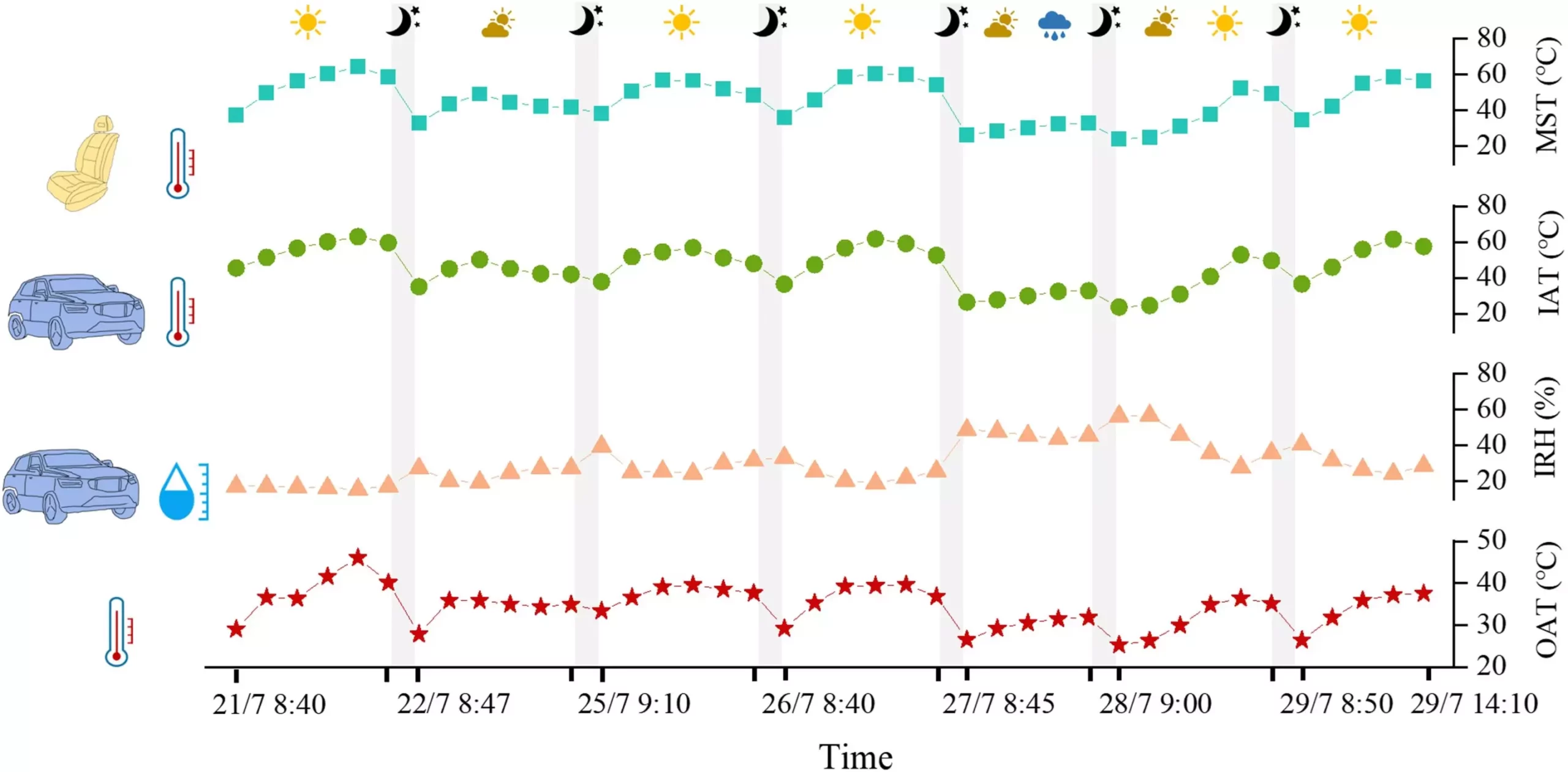The excitement of stepping into a brand-new vehicle is universally appealing. That tantalizing “new car smell” captures the emotions of countless consumers, drawing them into dealerships and igniting a desire to drive home in a shiny, pristine vehicle. However, beneath this alluring scent lies an unsettling truth: volatile organic compounds (VOCs) like formaldehyde and other aldehydes, quietly poisoning the air we breathe. This toxic concoction, although often ignored by consumers entranced by the aroma, can lead to various harmful health effects, including headaches, respiratory issues, and even long-term lung damage.
Pathetic but Predictable: The Rise in VOC Levels
A recent study led by researchers Jianyin Xiong and Shaodan Huang has shed light on this alarming issue, particularly under the scorching sun of summer. In an era where escalating temperatures driven by climate change are commonplace, the implications become even graver. When mapped against outdoor temperatures soaring between 25.3 °C and 46.1 °C (77.5 °F to 115 °F), VOC emissions from new vehicles sometimes shot past the Chinese national safety limits. Formaldehyde levels soared to over 200 μg/m3, decisively busting through the regulatory cap of 100 μg/m3. Similarly, acetaldehyde levels were observed to peak at 140 μg/m3, dwarfing the national limit of 50 μg/m3. This isn’t just a casual oversight; it constitutes a public health scandal waiting to be addressed.
Machine Learning: A Glimmer of Hope?
As cars become smarter and more technologically advanced, it is intriguing to see how science can intervene. The researchers employed a novel machine learning model that pinpointed material surface temperature as a crucial factor influencing in-cabin VOC concentrations. By integrating this predictive model into the design of intelligent vehicles, manufacturers might be able to better monitor and control the levels of harmful compounds inside cars. This approach not only could enhance passenger safety but also could elevate customer experience significantly by providing cleaner, safer environments.
The Duality of Innovation and Responsibility
Yet, amidst all this innovation, a chilling question remains unanswered: why are manufacturers not prioritizing the health and safety of consumers? In a world where electric vehicles and green technologies are touted as the future, we must confront the uncomfortable reality that even new vehicles—ostensibly symbols of progress—can be sources of toxicity. Corporate responsibility should extend beyond merely delivering a product; it must encompass the well-being of consumers as well.
The dissonance between consumer delight and health risks encapsulated in “new car smell” serves not only as a cautionary tale but also as a wake-up call for the automotive industry. It is high time we held manufacturers accountable for not just the luxury they promise, but the health impacts that lurk within their vehicles. There’s an urgent need for a shift in how we perceive car interiors—not as isolated spaces filled with nostalgia but as environments that demand ethical scrutiny and regulatory vigilance.

